Manuel’s Branch Bridge
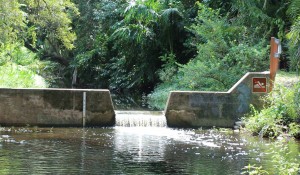 Manuel’s Branch is the name of a narrow, wooded creek that meanders westward along the southern boundary of Fort Myers High School and Edison Park before it empties into the Caloosahatchee River. Where Cortez Boulevard crosses the stream, the roadway is supported by the Manuel’s Branch Bridge. The bridge was selected in 2000 as the site for a memorial honoring Manuel A. Gonzalez, Fort Myers’ first permanent settler.
Manuel’s Branch is the name of a narrow, wooded creek that meanders westward along the southern boundary of Fort Myers High School and Edison Park before it empties into the Caloosahatchee River. Where Cortez Boulevard crosses the stream, the roadway is supported by the Manuel’s Branch Bridge. The bridge was selected in 2000 as the site for a memorial honoring Manuel A. Gonzalez, Fort Myers’ first permanent settler.
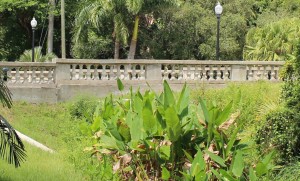 The memorial consists of bridgeworks cast by local sculptor D.J. Wilkins (see below). Wilkins was hired for the project by the Fort Myers Beautification Advisory Board, which had commissioned more than 20 other public artworks from the “official sculptor of Fort Myers.”
The memorial consists of bridgeworks cast by local sculptor D.J. Wilkins (see below). Wilkins was hired for the project by the Fort Myers Beautification Advisory Board, which had commissioned more than 20 other public artworks from the “official sculptor of Fort Myers.”
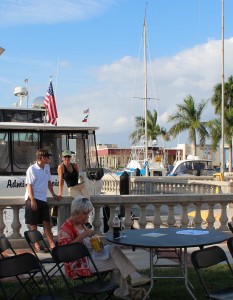 Wilkins skirted the bridge with 450 feet of ornate balustrade that contains end pilasters that feature raised reliefs of Manuel A. Gonzalez in cast marble and spacer pilasters that depict hummingbirds, butterflies, palmetto fronds and sea oats. Each was made from brands cut out of copper, hammered into shape and heated to burn the pattern into blue foam panels. The panels, in turn, were inserted into the moulds before the concrete was poured into them. When the moulds were stripped, the pattern was left in relief.
Wilkins skirted the bridge with 450 feet of ornate balustrade that contains end pilasters that feature raised reliefs of Manuel A. Gonzalez in cast marble and spacer pilasters that depict hummingbirds, butterflies, palmetto fronds and sea oats. Each was made from brands cut out of copper, hammered into shape and heated to burn the pattern into blue foam panels. The panels, in turn, were inserted into the moulds before the concrete was poured into them. When the moulds were stripped, the pattern was left in relief.
For moulds he made for the balusters, base and upper railings, Wilkins borrowed the pattern used by the WPA in the 1930s for the railings adjoining the Fort Myers Yacht Basin (left). He poured the balusters using 4,000 psi concrete for strength and durability. Each 12-foot section of rail weighs a staggering 1.5 tons. “The railing system has no steel running between the individual parts,” Wilkins points out, “and is designed to ‘break away’ when hit by a car.” The design not only reduces the risk of injury to the vehicle’s occupants, but decreases the costs of repair. “[The rails have] been hit seven times since being installed in 2000,” notes Wilkins, who hastens to add that there have been no injuries and that the total cost of all seven repairs has been just $4,500.
Who was Manuel A. Gonzalez?
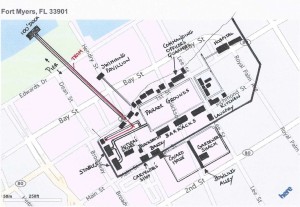 Fort Myers takes its name from a fort built in 1850 on the site of Fort Harvie, an outpost built at the tail end of the Second Seminole War. Re-garrisoned after a small band of Seminole Indians killed a trader by the name of Whidden, the fort was expanded and renamed for Abraham C. Myers, a colonel who never actually set foot in the fort. For the next eight years, Fort Myers served as the base of operations for the Army’s efforts to round up and deport the remaining Seminoles to Oklahoma, a brutal program that eventually sparked the Third Seminole War which ended in 1858 when a battle-weary Chief Billy Bowlegs agreed to leave southwest Florida after negotiating a sizeable relocation fee for himself, his warriors and the rest of his tribe.
Fort Myers takes its name from a fort built in 1850 on the site of Fort Harvie, an outpost built at the tail end of the Second Seminole War. Re-garrisoned after a small band of Seminole Indians killed a trader by the name of Whidden, the fort was expanded and renamed for Abraham C. Myers, a colonel who never actually set foot in the fort. For the next eight years, Fort Myers served as the base of operations for the Army’s efforts to round up and deport the remaining Seminoles to Oklahoma, a brutal program that eventually sparked the Third Seminole War which ended in 1858 when a battle-weary Chief Billy Bowlegs agreed to leave southwest Florida after negotiating a sizeable relocation fee for himself, his warriors and the rest of his tribe.
During this time, a Spanish trader by the name of Manuel A. Gonzalez brought supplies and mail to the fort from Key West on board a sloop that he captained.
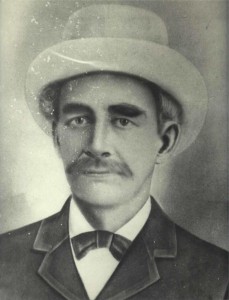 The fort was abandoned shortly after Chief Bowlegs and his people boarded the steamer Grey Cloud bound for New Orleans, but it was re-occupied by Union soldiers in January of 1864 under orders to disrupt the shipment of beef to the Confederate Army fighting in Tennessee by Southerners operating cattle ranches located from Punta Gorda north to Tampa. The fort was successfully defended from Confederate attack on February 20, 1865, but was abandoned in June of that year. The fort’s stockade and pine buildings (which included officers’ quarters, barracks, stables, blacksmith’s and carpenter’s shops, kitchen, bakery, laundry and 2 and 1/2 story hospital) were cannibalized over the course of the next six months by settlers living in Tampa and Sarasota who needed wood to rebuild the homes they lost during the war.
The fort was abandoned shortly after Chief Bowlegs and his people boarded the steamer Grey Cloud bound for New Orleans, but it was re-occupied by Union soldiers in January of 1864 under orders to disrupt the shipment of beef to the Confederate Army fighting in Tennessee by Southerners operating cattle ranches located from Punta Gorda north to Tampa. The fort was successfully defended from Confederate attack on February 20, 1865, but was abandoned in June of that year. The fort’s stockade and pine buildings (which included officers’ quarters, barracks, stables, blacksmith’s and carpenter’s shops, kitchen, bakery, laundry and 2 and 1/2 story hospital) were cannibalized over the course of the next six months by settlers living in Tampa and Sarasota who needed wood to rebuild the homes they lost during the war.
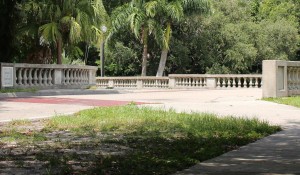 The following spring, Manuel A. Gonzalez returned to the fort he once supplied. One can only imagine Captain Gonzalez’s shock when he first laid eyes on the pick-over remnants of the once proud fort. But writing about their landing later on, the Captain’s son matter-of-factly reports: “A quartet of people landed here, in what was at that time an abandoned wilderness. My father, Manuel A. Gonzalez; John A. Weatherford, an uncle of mine; Joseph A. Vivas, a friend of our family; and myself, M.S. Gonzalez (then but 5 years of age) constituted the quartet. We arrived here in a sailing vessel …. The boat returned to Key West [for their wives and household goods] …. leaving my father and myself here all alone until the boat should return, which was three weeks.”
The following spring, Manuel A. Gonzalez returned to the fort he once supplied. One can only imagine Captain Gonzalez’s shock when he first laid eyes on the pick-over remnants of the once proud fort. But writing about their landing later on, the Captain’s son matter-of-factly reports: “A quartet of people landed here, in what was at that time an abandoned wilderness. My father, Manuel A. Gonzalez; John A. Weatherford, an uncle of mine; Joseph A. Vivas, a friend of our family; and myself, M.S. Gonzalez (then but 5 years of age) constituted the quartet. We arrived here in a sailing vessel …. The boat returned to Key West [for their wives and household goods] …. leaving my father and myself here all alone until the boat should return, which was three weeks.”
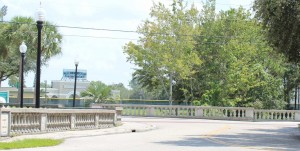 While the boat returned to Key West for his family, Gonzalez and his son “pieced together a home from what was left of the officers’ headquarters occupied by Lieut. Winfield Scott Hancock during the Seminole wars,” wrote Norita Shepard Moss in Manuel S. Gonzalez’s obituary on August 12, 1935. “When his family arrived, Capt. Gonzalez housed them in what was later known as the H.E. Heitman residence and which is now occupied by the Fort Myers public library. This is the oldest building in Fort Myers.”
While the boat returned to Key West for his family, Gonzalez and his son “pieced together a home from what was left of the officers’ headquarters occupied by Lieut. Winfield Scott Hancock during the Seminole wars,” wrote Norita Shepard Moss in Manuel S. Gonzalez’s obituary on August 12, 1935. “When his family arrived, Capt. Gonzalez housed them in what was later known as the H.E. Heitman residence and which is now occupied by the Fort Myers public library. This is the oldest building in Fort Myers.”
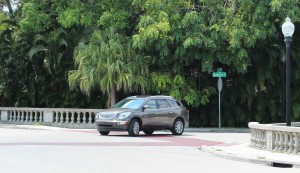 It was not long before other families began to relocate to Fort Myers. Many were cattle ranchers weary of living in relative isolation on their spreads near Fort Thompson in what is today LaBelle. Gonzalez operated a trading post where the federal courthouse stands today on First and Monroe Streets, and Mrs. Evalina Gonzalez became the first schoolteacher for the community that developed around it.
It was not long before other families began to relocate to Fort Myers. Many were cattle ranchers weary of living in relative isolation on their spreads near Fort Thompson in what is today LaBelle. Gonzalez operated a trading post where the federal courthouse stands today on First and Monroe Streets, and Mrs. Evalina Gonzalez became the first schoolteacher for the community that developed around it.
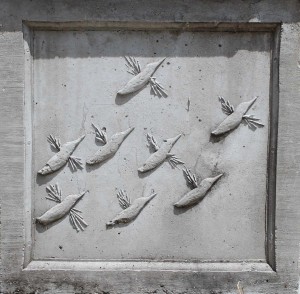 In 1872, Gonzalez decided to move his family out of town to a stake he claimed under the Homestead Act that extended from Jackson Street to the creek that bears his name, “making Gonzalez Fort Myers’ first permanent settler.” The creek became and still serves as the southern boundary of Edison Park.
In 1872, Gonzalez decided to move his family out of town to a stake he claimed under the Homestead Act that extended from Jackson Street to the creek that bears his name, “making Gonzalez Fort Myers’ first permanent settler.” The creek became and still serves as the southern boundary of Edison Park.
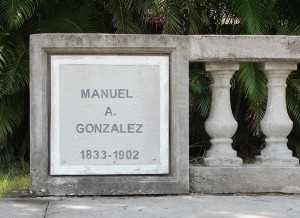 The City of Fort Myers was officially established in 1886 and became known as a desirable winter resort when the Royal Palm Hotel opened in 1898. Around this time, Tootie McGregor along with Thomas and Mina Edison began beautifying Fort Myers. McGregor paid to widen and pave an expanse of Riverside Drive, which was renamed McGregor Boulevard in her honor. At the same time, they planted royal palms along the avenue and today “these graceful palms are now 75 feet tall and provide an impressive guard of honor to all who arrive in Fort Myers today.”
The City of Fort Myers was officially established in 1886 and became known as a desirable winter resort when the Royal Palm Hotel opened in 1898. Around this time, Tootie McGregor along with Thomas and Mina Edison began beautifying Fort Myers. McGregor paid to widen and pave an expanse of Riverside Drive, which was renamed McGregor Boulevard in her honor. At the same time, they planted royal palms along the avenue and today “these graceful palms are now 75 feet tall and provide an impressive guard of honor to all who arrive in Fort Myers today.”
Manuel Gonzalez and the Veranda Restaurant
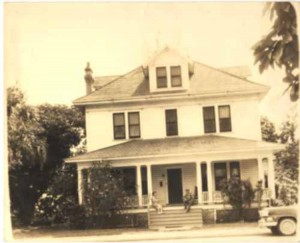 In 1902, Gonzalez’s son, Manuel S. (then 41), built two 3-story Southern Victorian houses on the corner of Broadway and Second Street. He moved his family into the house on the corner and his recently-widowed mother into the other. In the 1970s, both homes were purchased by Peter Pulitzer, son of the well-known publisher, who joined the structures into a single home for his long-time fishing buddy, Fingers O’Bannon.
In 1902, Gonzalez’s son, Manuel S. (then 41), built two 3-story Southern Victorian houses on the corner of Broadway and Second Street. He moved his family into the house on the corner and his recently-widowed mother into the other. In the 1970s, both homes were purchased by Peter Pulitzer, son of the well-known publisher, who joined the structures into a single home for his long-time fishing buddy, Fingers O’Bannon.
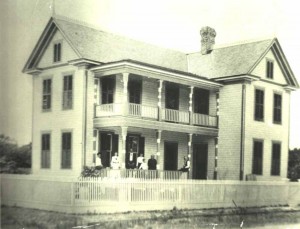 Paul Peden purchased the buildings in 1978 and transformed them into an upscale restaurant under the name of the Veranda. Since Peden opened the Veranda, it has consistently been one of Southwest Florida’s most decorated restaurants and host to thousands of weddings, anniversaries, corporate dinners, romantic outings, engagements, high stakes business deals and other special events, with a reputation for fine food and authentic, turn-of-the-century atmosphere.
Paul Peden purchased the buildings in 1978 and transformed them into an upscale restaurant under the name of the Veranda. Since Peden opened the Veranda, it has consistently been one of Southwest Florida’s most decorated restaurants and host to thousands of weddings, anniversaries, corporate dinners, romantic outings, engagements, high stakes business deals and other special events, with a reputation for fine food and authentic, turn-of-the-century atmosphere.
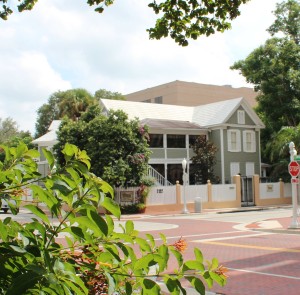 The restaurant features Southern Regional Cuisine, an extensive wine list, exemplary service, a piano bar and outdoor courtyard dining that features a goldfish pond, waterfall and 100 different botanical plants including one of the largest African tulip trees in the area. The Veranda celebrated its 35th anniversary in February of 2013.
The restaurant features Southern Regional Cuisine, an extensive wine list, exemplary service, a piano bar and outdoor courtyard dining that features a goldfish pond, waterfall and 100 different botanical plants including one of the largest African tulip trees in the area. The Veranda celebrated its 35th anniversary in February of 2013.
The original kitchen building from the second house and secluded garden courtyard is all that remains of the mother-in-law house, which was located in what is now the Veranda’s parking lot. The restored home informs the Veranda with a romantic motif that makes it a charming place in which to have lunch or dinner in the heart of downtown Fort Myers.
D.J. Wilkins’ Other Public Artworks
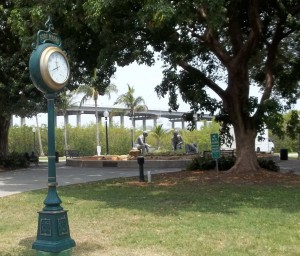 Besides the Manuel A. Gonzalez Memorial Bridge, Wilkins’ resume’ includes Uncommon Friends, a sculpture depicting Fort Myers’ iconic winter residents Thomas Edison, Henry Ford and Harvey Firestone gathered around a campfire on a tiny island in the middle of a reflection pool and fountain. Long regarded as the sculptural symbol of Fort Myers, the installation resides at the Monroe Street entrance to Centennial Park and within eye shot of three more of Wilkins’ outdoor sculptures, The Great Turtle Chase, Clayton and The Florida Panther on Monroe Street. Wilkins also cast the busts of Captain Francis Asbury Hendry, Paul L. Dunbar, Connie Mack Sr., Tootie McGregor Terry, Thomas Edison, James D. Newton and Chief Billy Bowlegs, known collectively as “The Harborside Collection,” a bust of Henry Ford and heroic size statues of Thomas Edison, Mina Edison and Henry Ford at the Edison & Ford Winter Estates (known as the Edison Ford Estates Collection), sculptures of Thomas Edison for both the Lee and Collier campuses of Edison State College, and the Wes Nott Statue on the campus of Lee Memorial Hospital.
Besides the Manuel A. Gonzalez Memorial Bridge, Wilkins’ resume’ includes Uncommon Friends, a sculpture depicting Fort Myers’ iconic winter residents Thomas Edison, Henry Ford and Harvey Firestone gathered around a campfire on a tiny island in the middle of a reflection pool and fountain. Long regarded as the sculptural symbol of Fort Myers, the installation resides at the Monroe Street entrance to Centennial Park and within eye shot of three more of Wilkins’ outdoor sculptures, The Great Turtle Chase, Clayton and The Florida Panther on Monroe Street. Wilkins also cast the busts of Captain Francis Asbury Hendry, Paul L. Dunbar, Connie Mack Sr., Tootie McGregor Terry, Thomas Edison, James D. Newton and Chief Billy Bowlegs, known collectively as “The Harborside Collection,” a bust of Henry Ford and heroic size statues of Thomas Edison, Mina Edison and Henry Ford at the Edison & Ford Winter Estates (known as the Edison Ford Estates Collection), sculptures of Thomas Edison for both the Lee and Collier campuses of Edison State College, and the Wes Nott Statue on the campus of Lee Memorial Hospital.
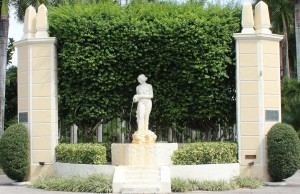 Wilkins has also played an instrumental role in restoring several of Southwest Florida’s public sculptures including The Spirit of Fort Myers at the entrance to Edison Park (right), the Tootie McGregor Fountainin front of the Edison Restaurant at the Fort Myers Country Club and the Iwo Jima Memorial in Eco Park on Veteran’s Parkway in Cape Coral.
Wilkins has also played an instrumental role in restoring several of Southwest Florida’s public sculptures including The Spirit of Fort Myers at the entrance to Edison Park (right), the Tootie McGregor Fountainin front of the Edison Restaurant at the Fort Myers Country Club and the Iwo Jima Memorial in Eco Park on Veteran’s Parkway in Cape Coral.
Fast Facts.
- The bridge that spans Manuel’s Branch creek was built in 1960.
- According to a survey performed in October, 2009, the bridge itself is functionally obsolete.
- The bridge accommodates average traffic of 1,923 vehicles per day.














 Tom Hall is both an amateur artist and aspiring novelist who writes art quest thrillers. He is in the final stages of completing his debut novel titled "Art Detective," a story that fictionalizes the discovery of the fabled billion-dollar Impressionist collection of Parisian art dealer Josse Bernheim-Jeune, thought by many to have perished during World War II when the collection's hiding place, Castle de Rastignac in southern France, was destroyed by the Wehrmacht in reprisal for attacks made by members of the Resistance operating in the area. A former tax attorney, Tom holds a bachelor's degree as well as both a juris doctorate and masters of laws in taxation from the University of Florida. Tom lives in Estero, Florida with his fiancee, Connie, and their four cats.
Tom Hall is both an amateur artist and aspiring novelist who writes art quest thrillers. He is in the final stages of completing his debut novel titled "Art Detective," a story that fictionalizes the discovery of the fabled billion-dollar Impressionist collection of Parisian art dealer Josse Bernheim-Jeune, thought by many to have perished during World War II when the collection's hiding place, Castle de Rastignac in southern France, was destroyed by the Wehrmacht in reprisal for attacks made by members of the Resistance operating in the area. A former tax attorney, Tom holds a bachelor's degree as well as both a juris doctorate and masters of laws in taxation from the University of Florida. Tom lives in Estero, Florida with his fiancee, Connie, and their four cats.